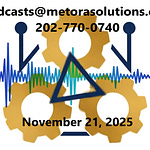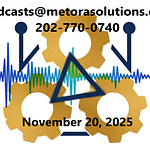1.0 Introduction: The End of Bureaucratic Inertia
When you think of federal technology projects, you likely picture a slow, expensive grind. Government acquisition has long been stereotyped as an 18-month obstacle course, bogged down by labyrinthine approval processes that stifle innovation and inflate costs. This perception of bureaucratic inertia has been the accepted reality for decades.
But that reality was just shattered. In a quiet but radical overhaul, the White House has completely transformed federal AI procurement, turning a system known for delay into one built for speed and efficiency. This post breaks down the four most significant and surprising takeaways from this revolution, which has accelerated AI adoption from a policy obstacle to a strategic advantage in just six months.
2.0 Takeaway 1: Bureaucracy Vanishes as Timelines Collapse From 18 Months to 3
The most immediate change is the dramatic reduction in bureaucratic hurdles. The White House Office of Management and Budget has fundamentally restructured federal AI acquisition policies, streamlining the entire process from initial request to operational deployment.
The “before and after” statistics are staggering. Under the previous administration, AI deployment required a risk-averse, restrictive process that typically took 12 to 18 months. The new, pro-innovation policies have collapsed that timeline, enabling deployment in just 3 to 6 months.
This acceleration was achieved through a massive simplification of the approval chain. The new policies eliminated 23 of the 47 separate approval steps that were previously required for an AI system to go live, all while maintaining essential oversight through modern frameworks like FedRAMP alignment and zero-trust architecture.
3.0 Takeaway 2: AI Costs Plummet by 99.9% in a Radical New Pricing Model
The economic transformation is just as revolutionary as the procedural one. Previously, a typical enterprise AI license for a federal agency could cost between $900,000 and $3 million annually, requiring complex and lengthy individual vendor negotiations.
The game-changer is the General Services Administration’s (GSA) new “OneGov” breakthrough pricing agreement. Under this model, the cost of enterprise AI access has been virtually eliminated. For example, the xAI agreement provides an entire federal agency with unlimited access to enterprise AI for just 42 cents total for 18 months. This is part of a broader GSA pricing strategy, with other major vendors like ServiceNow and Google also offering discounts exceeding 70 percent on their AI platforms.
This new pricing structure represents a 99.9% cost reduction compared to traditional enterprise licensing. When applied across the government’s annual IT spending, these savings are projected to reach $2.1 billion annually, freeing up immense capital for further innovation.
4.0 Takeaway 3: The Pentagon Places an $800 Million Bet on Mission-Critical AI
The most significant indicator that federal AI has moved beyond theory is the Pentagon’s spending. In a single award cycle, the Defense Department’s Chief Digital and AI Office has committed $800 million in direct AI procurement. This multi-vendor approach provides redundant capabilities across different operational applications, preventing single points of failure while ensuring competition and innovation.
This historic investment is not for small-scale, experimental pilot programs. The funding is explicitly for the “operational deployment of artificial intelligence in mission-critical federal applications,” signaling a major strategic shift from research and development to real-world integration.
Underscoring the seriousness of this commitment are the companies that received contracts. The Chief Digital and AI Office awarded individual contracts valued at $200 million each to Anthropic for Claude, Google for Gemini, OpenAI for ChatGPT operational support, and xAI for Grok, integrating top-tier commercial AI into national security operations.
5.0 Takeaway 4: The AI Market Reacts With a 227% Surge in Activity
These sweeping federal policy changes have created a clear and lucrative path for vendors, resulting in a measurable market acceleration. To compete in this transformed marketplace, major enterprise software vendors are now accelerating FedRAMP compliance and building dedicated federal sales teams.
Data from the Federal Procurement Data System shows that AI-related government contract awards have increased by 227 percent in the past 12 months alone, jumping from 127 to 415 awards. This surge includes contracts across civilian agencies, defense departments, and intelligence organizations.
The impact on individual companies is already apparent. Tech firm ServiceNow, for example, reported 30 percent higher public sector sales in the first quarter of 2025 and won six new major government customers, citing the new federal AI adoption initiatives as a primary driver.
6.0 Conclusion: A New Era for Public Sector Innovation
The federal government has executed a stunning transformation of its technology acquisition framework. With unprecedented speed, massive cost savings, and a decisive shift to operational AI, the public sector has moved from laggard to leader. The bureaucratic obstacles have been cleared, the financial barriers have been demolished, and the strategic commitment has been made.
Now that the federal government has created the most favorable AI procurement environment in history, what will this new competitive advantage mean for the future of citizen services and national security?
The following report presents the complete source bibliography used to support the content of the “Federal AI Procurement Revolution” document, formatted for a blog post reference section.
Sources and Key Data for the Federal AI Procurement Revolution
The following sources provide the foundational data and policy decisions driving the current revolution in federal AI acquisition, detailing major policy shifts, strategic investments, and procurement changes.
Policy and Governance Transformation
1. White House Releases New Policies on Federal Agency AI Use and Procurement
Date: April 7, 2025
Key Data: This action resulted in the reduction of 47 approval steps and the removal of bureaucratic restrictions.
URL:
https://www.whitehouse.gov/articles/2025/04/white-house-releases-new-policies-on-federal-agency-ai-use-and-procurement/
Major Procurement Deals and Cost Savings
2. GSA and xAI Partner on $0.42 per Agency Agreement
Date: September 25, 2025
Key Data: Establishes $0.42 pricing per agency for unlimited access, based on an 18-month agreement term.
URL:
https://www.gsa.gov/about-us/newsroom/news-releases/gsa-xai-partner-to-accelerate-federal-ai-adoption-09252025
3. ServiceNow, GSA strike OneGov deal to drive government AI adoption
Date: September 3, 2025
Key Data: Details a 70% discount offered by ServiceNow, leading to projected 30% efficiency gains.
URL:
https://www.nextgov.com/acquisition/2025/09/servicenow-gsa-strike-onegov-deal-drive-government-ai-adoption/407844/
Strategic Investment and Deployment
4. Pentagon awards multiple companies $200M contracts for AI tools
Date: July 14, 2025
Key Data: Represents a $800 million total investment distributed among four vendors (Anthropic, Google, OpenAI, xAI) for mission-critical applications.
URL:
https://www.nextgov.com/acquisition/2025/07/pentagon-awards-multiple-companies-200m-contracts-ai-tools/406698/
5. GSA Launches USAi to Advance White House AI Action Plan
Date: August 14, 2025
Key Data: Introduces USAi, a platform enabling zero-cost AI evaluation for all agencies.
URL:
https://www.gsa.gov/about-us/newsroom/news-releases/gsa-launches-usai-to-advance-white-house-americas-ai-action-plan-08142025








